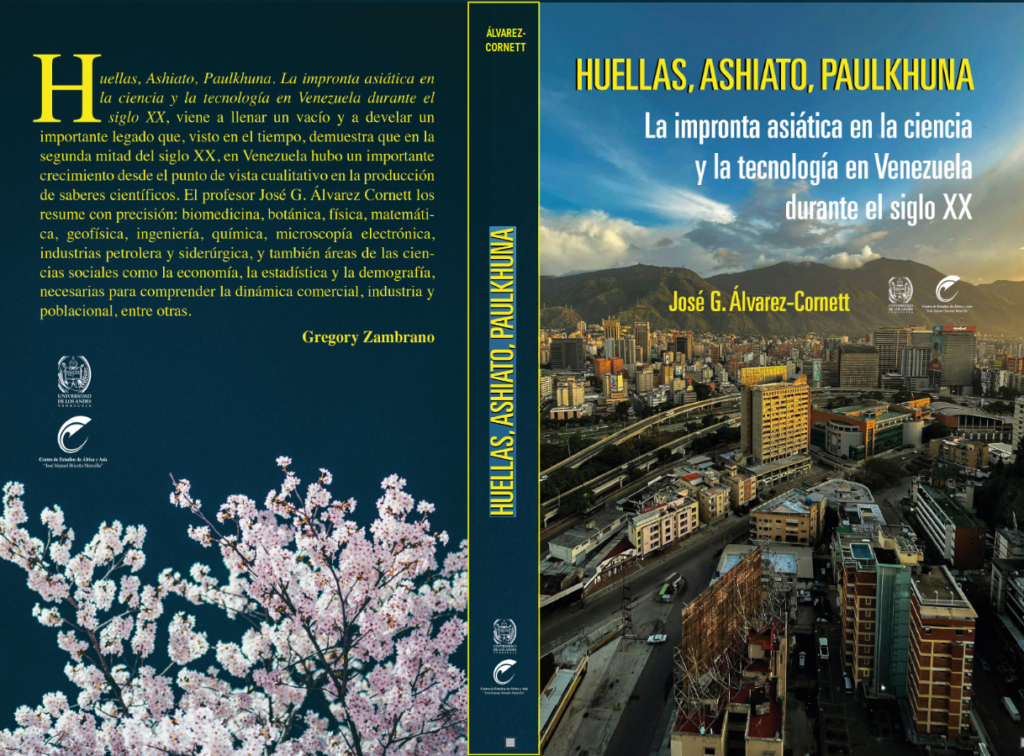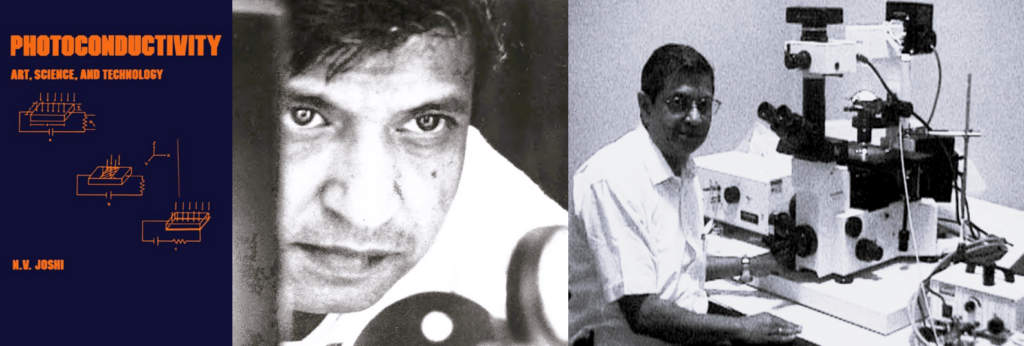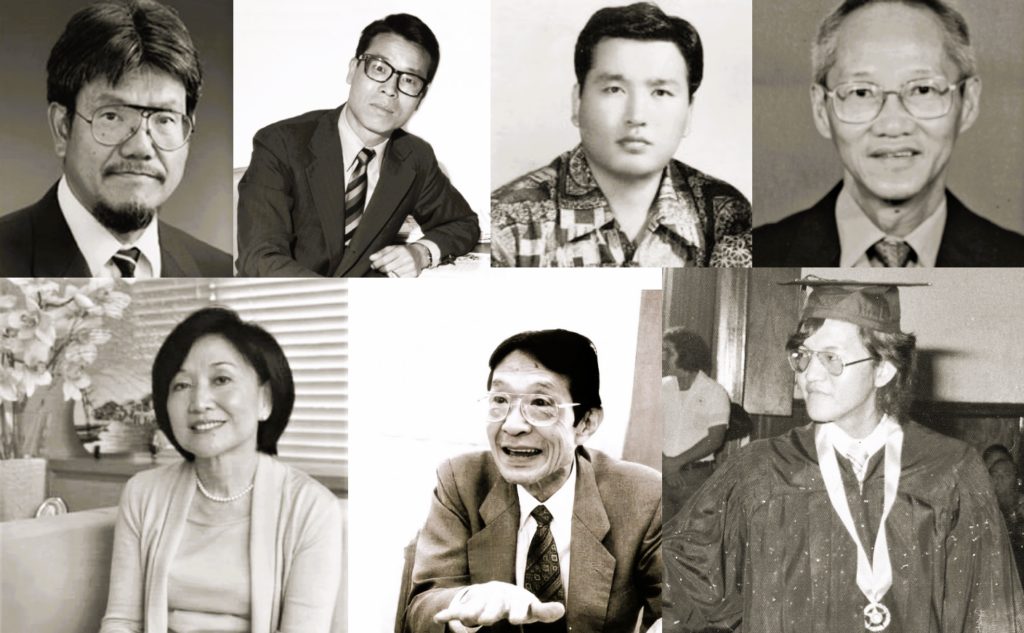Asia and Venezuela Have Exchanged STEM Knowledge for 70 Years
A new book traces the contributions that Asian scientists have made in domestic institutions and companies for decades, while the Venezuelan diaspora grows at the other end of the planet


The Asian community in Venezuela is primarily known for its achievements in commercial activities, such as import and export businesses, laundries, warehouses, restaurants, and stores. Some people might be amazed to discover that Asian immigrants in Venezuela also contributed to our STEM disciplines. On the other hand, many people will be surprised to learn that Venezuelans are participating in science and technology currently being developed in Asia.
As I found out working in the VES PROJECT research initiative, many Asian professors taught STEM disciplines in our universities. The economic boom that Venezuela experienced from the 1950s to 1970s and the high level of acceptance by Venezuelan society and its institutions of foreign professionals attracted talents from many corners of the world, including from Japan, China, India, Pakistan, the former East Pakistan (now Bangladesh), South Korea, Taiwan, Hong Kong, and Malaysia.

“Huellas, Ashiato, Paulkhuna”
I have been studying this fascinating aspect of Venezuelan society for some time, with a special focus on Asians in Venezuela. Finally, I presented my research findings in the book Huellas, Ashiato, Paulkhuna. La impronta asiática en la ciencia y la tecnología en Venezuela durante el siglo XX (Huellas, Ashiato, Paulkhuna. The Asian Imprint on Science and Technology in Venezuela During the 20th Century), recently published by the Centro de Estudios de África y Asia of the Universidad de Los Andes (CEAA-ULA), in Mérida, Venezuela.
These three words: Huellas (Spanish), Ashiato (Japanese, 足跡), and Paulkhuna (Marathi, पाऊलखुणा; the language spoken in the Indian state of Maharashtra, whose capital is Mumbai), all carry the same meaning: “footprints.”

Huellas, Ashiato, Paulkhuna explores, amid others, the case of the first Japanese scientist to visit Venezuela in the late 19th century, when Japanese fisheries were exploring Venezuelan territorial waters, resulting in the first tuna exports from Venezuela in 1956.

Seventy professionals with Asian heritage, either born in Asia or with genealogical roots in the region, are presented in Huellas, Ashiato, Paulkhuna. Forty nine of them immigrated from East Asia. They worked in engineering and architecture, oceanography and fisheries Sciences, physics, biology, mathematics, biomedicine, chemistry, social sciences, food science, and materials science.
Specifically, they contributed to studies on leprosy, microbiology, and physiology of vision, as well in electrical and mechanical engineering, robotics, and bioengineering. The physicists have worked in condensed matter, elementary particles, semiconductor devices, and geophysics. And the social scientists in Venezuelan socioeconomic environment, demographics, and population dynamics. These Asian professionals contributed as well as in the fields of botany, chemistry of natural products, electron microscopy, epistemology and science education, food science, marine sciences, materials science, and mathematics.
A flip side story: Venezuelans in Asia
However, in Huellas, Ashiato, Paulkhuna I could not address the contribution of Venezuelans to Asia. There are currently over 30,000 Chinese-Venezuelans living in Enping, China, whose activities I hardly know about. Meanwhile, in Japan, the Venezuelan diaspora is smaller. Only a few hundred Venezuelans live in places such as Tokyo, Nagaoka, Nagoya, Yokohama, and other cities. The diaspora is comprised of Venezuelans with Japanese roots (like Maite or Kengo Maeda Pérez), a few engineering students, scientists, and musicians (like Diego Matheuz, Principal Conductor of the Seiji Ozawa Academy of Music Orchestra in Kyoto, or Fernando), or people performing several jobs like Raúl Marquéz, Andreina Fernandes, and the ten Venezuelans working as grooms at the Nagoya horse racing track. They are all part of our current Venezuelan worldwide diaspora.
It’s a fact, though, that from the mid-1980s a few Venezuelan scientists and engineers settled in Japan and began making important contributions to Japanese science and technology, primarily in physics, engineering, and materials science.
Among them we find four graduates of Universidad Simón Bolivar (USB): material scientists Manuel Eduardo Brito Salazar, Gustavo Alberto Rosales-Sosa, Denise Zujur and renowned physicist Franco Nori, a specialist in condensed matter physics, quantum computing, and nanoscience, one of the most cited Venezuelan scientists, who currently is the Chief Scientist in the Theoretical Quantum Physics Lab at RIKEN (Rikagaku Kenkyūjo), Japan’s largest research organization for basic and applied science. In 2024, Optica (formerly Optical Society of America) awarded Nori the Charles Hard Townes Medal for “his many fundamental contributions to quantum optics, quantum information processing, and quantum circuits, and for the development of key quantum software tools.”

Manuel E. Brito built a distinguished career primarily in Japan after earning his undergraduate degree in Materials Engineering from USB in 1982. He pursued graduate studies at Nagaoka University of Technology (M.A. in 1986 and Ph.D. in 1989), followed by post-doctoral work in Japan. Brito is renowned for his research on silicon nitride ceramics and microstructural characterization of material interfaces in solid oxide fuel cells and electrolysis cells. He was the Chief Senior Research Scientist at the National Institute of Advanced Industrial Science and Technology. He then transitioned to academia, serving as a professor at Yamanashi University’s Clean Energy Research Center from 2013 to 2019, before joining Soochow University in China in 2019, where he now focuses on teaching Materials Science.
Gustavo Alberto Rosales-Sosa earned his Ph.D. in Materials Science from the University of Tokyo, where he co-discovered a new kind of glass almost as tough as steel. He is currently a Senior Research Scientist at Nippon Electric Glass and a co-founder of Smart Tissues with his wife, Denise Zujur, who acts as the company’s CEO. Denise Zujur earned her Ph.D. in Bioengineering from the University of Tokyo (2017) and has since been involved in the Japanese biotechnology industry. She is also a researcher in Kyoto, at the Center for iPS Cell Research and Application (CiRA) (iPS cell or induced pluripotent stem cell is considered a promising solution in regenerative medicine).

Midori Saito (now Midori Saito de Kon or Midori Kon), the daughter of Japanese immigrants, was born in Táchira, Venezuela, and later settled in Japan. She did her undergraduate studies in Engineering at Universidad Simón Bolívar in Caracas. After earning a Ph.D. in Engineering Ceramics at Nagaoka University of Technology, she joined Corning Japan, where she holds the position of Worldwide Process Engineer.
Meanwhile, in Thailand, Venezuelan physicist Salvatore de Vincenzo teaches physics and researches in Theoretical Physics while working as a Lecturer at The Institute for Fundamental Study (IF), Naresuan University. He earned his undergraduate and doctoral degrees in theoretical physics from the Universidad Central de Venezuela.
I am sure there are other Venezuelans in the region contributing to the development of Asian countries in many ways. Please, let us know where you are in Asia, and tell us what you are doing.
“Huellas” and the VES PROJECT
The VES PROJECT research initiatives are possible because many individuals and institutions provide vital information. In the book’s acknowledgment section, I credit them all, but one. It is an omission that chagrins me and weighs on my mind. I want to take this opportunity to acknowledge the special help I received from Gabriel Alejandro Flores, who sent me copies of a key Japanese document used in my research. At that time, Gabriel was a student at Nagoya University, and is now working at Berlitz Japan. Other people have helped by donating. To support the VES PROJECT, click here.
A digital copy of “Huellas, Ashiato, Paulkhuna” can be downloaded from the ULA Digital Repository (if the Mérida campus has electricity) or from my ResearchGate.
Caracas Chronicles is 100% reader-supported.
We’ve been able to hang on for 22 years in one of the craziest media landscapes in the world. We’ve seen different media outlets in Venezuela (and abroad) closing shop, something we’re looking to avoid at all costs. Your collaboration goes a long way in helping us weather the storm.
Donate




